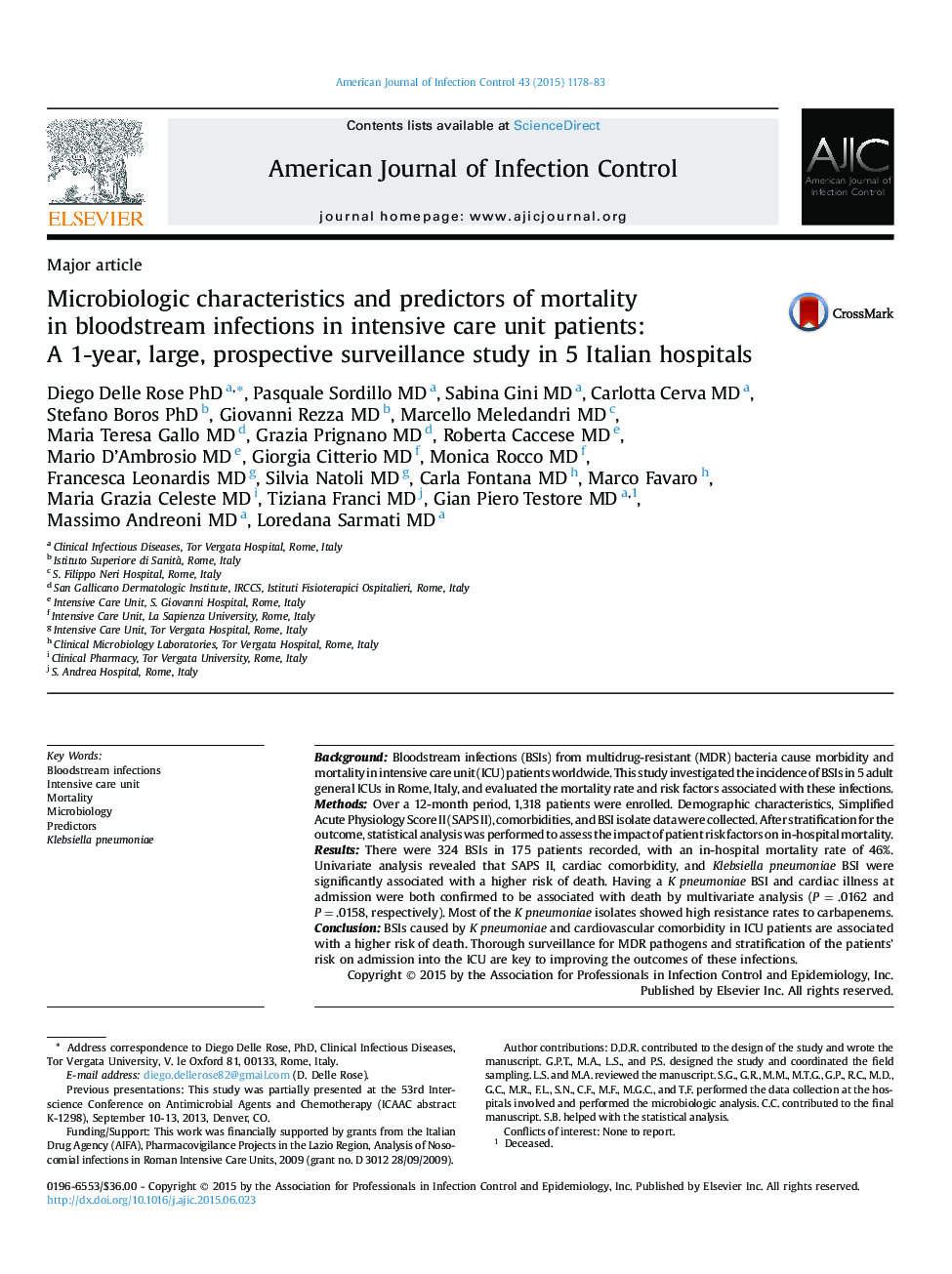| کد مقاله | کد نشریه | سال انتشار | مقاله انگلیسی | نسخه تمام متن |
|---|---|---|---|---|
| 5867134 | 1563466 | 2015 | 6 صفحه PDF | دانلود رایگان |
- This study reported an annual bloodstream infection incidence rate of up to 132 patients per 1,000 intensive care unit admissions.
- There was 10Â days mean time of intensive care unit stay before developing a bloodstream infection event.
- Gram-negative bacilli and coagulase-negative staphylococci accounted for most bloodstream infections in the intensive care unit.
- Carbapenem-resistant phenotype was observed in up to 84% of Klebsiella pneumoniae strains.
- Klebsiella pneumoniae bloodstream infections and heart disease are significantly associated with higher intensive care unit mortality.
BackgroundBloodstream infections (BSIs) from multidrug-resistant (MDR) bacteria cause morbidity and mortality in intensive care unit (ICU) patients worldwide. This study investigated the incidence of BSIs in 5 adult general ICUs in Rome, Italy, and evaluated the mortality rate and risk factors associated with these infections.MethodsOver a 12-month period, 1,318 patients were enrolled. Demographic characteristics, Simplified Acute Physiology Score II (SAPS II), comorbidities, and BSI isolate data were collected. After stratification for the outcome, statistical analysis was performed to assess the impact of patient risk factors on in-hospital mortality.ResultsThere were 324 BSIs in 175 patients recorded, with an in-hospital mortality rate of 46%. Univariate analysis revealed that SAPS II, cardiac comorbidity, and Klebsiella pneumoniae BSI were significantly associated with a higher risk of death. Having a K pneumoniae BSI and cardiac illness at admission were both confirmed to be associated with death by multivariate analysis (PÂ =Â .0162 and PÂ =Â .0158, respectively). Most of the K pneumoniae isolates showed high resistance rates to carbapenems.ConclusionBSIs caused by K pneumoniae and cardiovascular comorbidity in ICU patients are associated with a higher risk of death. Thorough surveillance for MDR pathogens and stratification of the patients' risk on admission into the ICU are key to improving the outcomes of these infections.
Journal: American Journal of Infection Control - Volume 43, Issue 11, 1 November 2015, Pages 1178-1183
